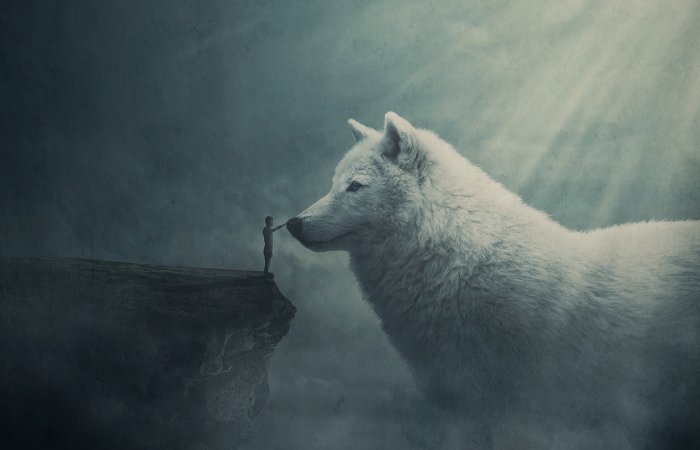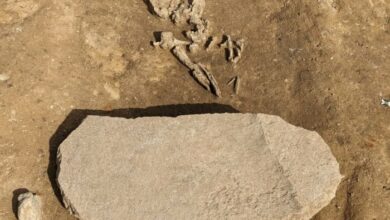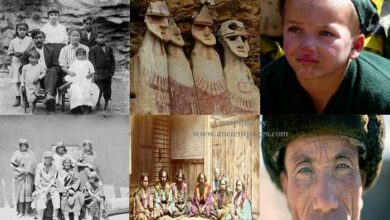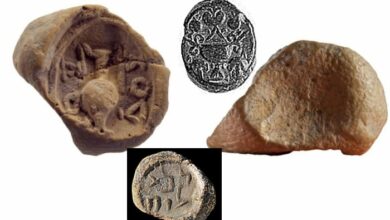Fylgja – Norse Guardian Spirit Was Deeply Respected

Ellen Lloyd – AncientPages.com – In the beliefs of the Norse people, spirits were of great importance. Despite being invisible to the human eye, these spirits could reveal themselves in various forms, frequently by shape-shifting into animals.
A Fylgja could shape-shift into any animal. Credit: Adobe Stock – yj
Invisible to the naked eye, spirits can manifest themselves differently to humans, often by shape-shifting into animals.
The Norse people deeply respected nature and believed that diverse types of spirits inhabited distinct realms. These spirits could possess divine or semi-divine characteristics, serve as protectors of territories, or be associated with individuals.
Like numerous other ancient societies, the Norse culture upheld the belief in the existence of a soul. Furthermore, it was also perceived that every individual was accompanied by an unseen guardian throughout their life journey.
The Norse watcher spirit was known as “vörðr, and the ‘force’ can be best described as a personal warden or caretaker spirit. On some occasions, vörðr could become visible, and when it happened, it revealed itself as a small light or as the person’s shape. People with strong senses could become aware of other’ watcher spirits.
Encountering another person’s vörðr was unpleasant.” 1
Norse People Believed A Person Could Have More Than One Soul
Another intriguing Norse guardian spirit connected to an individual is the Fylgja.
The Fylgja (Old Norse name for “Follower” and fylgjur in plural) is known in Scandinavian countries under different names. In Iceland, the spirit is called Fylgja; in Norway, people refer to it as Folgie and Vardogr; in Sweden, it is Valnad or Vard, and in Finland, the being was known as Saattaja.
The Fylgja, a complex Norse concept, embodies various intriguing aspects. It signifies a soul while simultaneously acting as a guardian spirit and an individual’s psychic counterpart. Intriguingly, it is believed to depart from the sleeping body during dreams and engage in visits to friends or adversaries.
One can say that the concept of Fylgja can be linked to the belief that a person possesses multiple souls.
One of these souls is thought to be able to depart from its host body and manifest itself either as a duplicate of the individual or in an animal form. This manifestation could occur both in dreams and during wakefulness. Over time, this soul was perceived to evolve into an independent entity, albeit still associated with its original owner. It primarily made appearances preceding the death of its owner.
A man’s power can influence the number of fylgjur he possesses. The more powerful the individual, the more fylgjur he may have.
The Fylgja can be compared to the Greek daimon, the Latin genius, and the Christian guardian angel, which the Norse called the “follower-angel” (fylgjuengill).
Fylgja Could Transform Into A Animal Or Humanoid
The Norse Sagas contain accounts of the fascinating entity Fylgja, which typically appears as an animal but can transform into a human form.
In the legendary Poetic Edda, Helgi, who is Hjorvarth’s son, makes an appearance to his brother Hethin as a Troll-wife riding a wolf that was bridled by snakes. Despite her advances, he rejected her and subsequently received threats of revenge at the ‘king’s toast’ during the Yule feast that night. During this event, Hethin pledged his love for Svava – Helgi’s beloved. Overwhelmed by guilt and sorrow, he sought out Helgi to confess his vow. However, Helgi consoled him and revealed that he was preparing for a duel which might result in his death. It was then that Hethin realized he had encountered Helgi’s Fylgja!
The Fylgja, as an animal, often mirrored the personality traits of its owner. For instance, powerful leaders were associated with bulls and bears, while cunning individuals were linked to foxes. In the Njals saga, Hauskuld had a dream in which he saw a huge bear leaving a house with two cubs and entering another. Recognizing that there was no other like it, he interpreted this as the Fylgja of Gunnar, who was unrivaled in his qualities.
It happened often that Fylgja visited a person in a dream. The guardian spirit came to reliever an important message. Credit: Adobe Stock – psychoshadow
A Fylgja could enter a person’s dream world to foretell future events. For example, in his dream, Einar envisioned a massive ox journeying towards the estate of his influential brother, Gudmund. The ox collapsed and died upon reaching the high seat, allowing Einar to predict his brother’s death.
The Norse culture believed that individuals on the brink of death could perceive their own Fylgja. However, It is unclear if a person’s Fylgja ceased to exist when that individual died. It remains a possibility that these Norse guardian spirits may have continued their existence within the unseen realm.
Written by Ellen Lloyd – AncientPages.com
Copyright © AncientPages.com All rights reserved. This material may not be published, broadcast, rewritten or redistributed in whole or part without the express written permission of AncientPages.com
Expand for references






